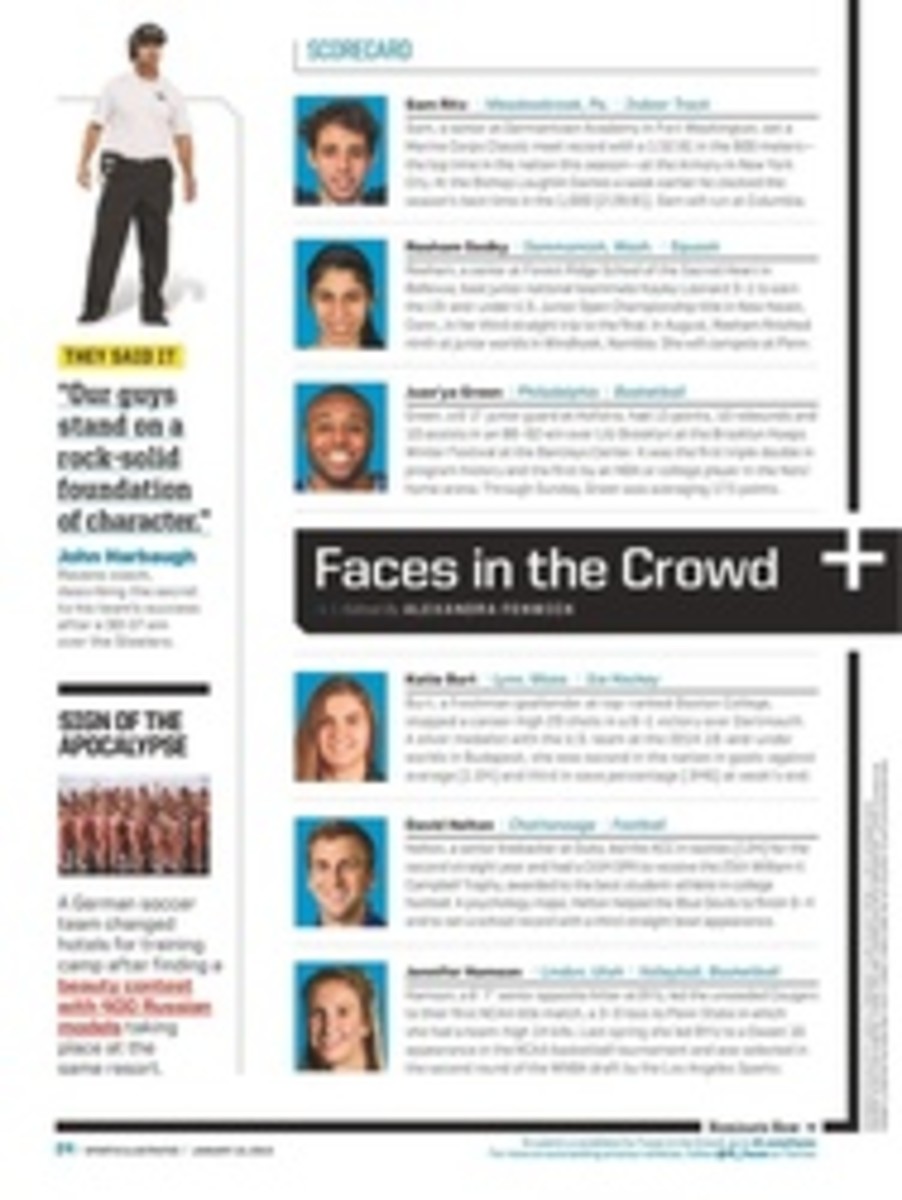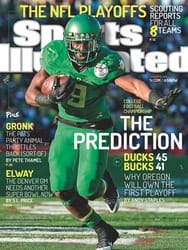
PACKERS
• PACKERS VS. COWBOYS / SUNDAY 1:05 P.M. EST
AARON RODGERS is deserving of the NFL's MVP award this season because he consistently found success in situations when the opposing D had, by all reasonable expectation, won. When pressure got in his face, when coverage stifled his receivers or when his team's play call was tactically defeated, the Packers often still came away with a first down or better. Usually those positive outcomes were the result of Rodgers's ability to conjure magic late in the down.
Green Bay's QB has become the finest in football at extending plays, better than even the precocious Andrew Luck or the longtime gold standard of time buying, Ben Roethlisberger. But while those two prolong the action by shedding would-be sackers, Rodgers does so by eluding them. He's similar to Russell Wilson in this sense, but unlike Seattle's young QB, Rodgers expertly maintains a full scope of the field and his full complement of receiving targets to keep plays alive. Crucially, he can do this inside and outside the pocket, as well as on the move.
Few NFL passers have had the talent to transcend what purists might call Rodgers's "improper mechanics." But he seems to have come to terms with what many have not: In this league, quarterbacks rarely have the luxury of being able to drop back, plant and step into their throw with perfect form. Muddied pockets are the norm. So instead of going through painstaking—and usually fruitless—efforts to set his feet under duress, Rodgers has mastered the art of throwing without his feet being set. A compact, quick release allows him to do this from multiple platforms and make quicker decisions.
Consider also that Rodgers excels at reading defenses and that he's equally as dangerous operating within the structure and timing of coach Mike McCarthy's offense, and this becomes clear: He is a once-in-a-generation type of quarterback.
While we marvel at the likes of Tom Brady for prospering with an underwhelming supporting cast, Rodgers falls into the category of QBs, like Peyton Manning, who are blessed with talented wideouts. None of them are better than Jordy Nelson, a big-play and possession target who had a 98-catch, 13-TD season, and Randall Cobb (91 catches, 12 TDs) brings invaluable versatility. As the season progressed, McCarthy deployed Cobb in more diversified ways, including lining him up in the backfield to take handoffs or run routes against overmatched linebackers.
Nelson and Cobb have developed an acute sense for improvising when Rodgers extends a play. Couple this chemistry with a drastically improved offensive line and a ground game that, powered by Eddie Lacy and James Starks, can be load-bearing when needed, and you get the most complete Packers team since Rodgers replaced Brett Favre in 2008. You also have the most complete offense on the NFC side of this year's playoff bracket.
PHOTO
KEVIN HOFFMAN/USA TODAY SPORTS (NELSON)
PHOTO
TOM DIPACE
GREEN BAY'S DEFENSIVE FRONT
If the Packers are to reach their second Super Bowl in five years, they'll have to get big plays out of their pass rush, particularly in coordinator Dom Capers's various sub packages. Their so-called NASCAR package—which features Clay Matthews, Julius Peppers, Nick Perry and Mike Neal in amoeba-like fronts—is perfect for crafting blitzes. Perry and especially Neal improved as one-on-one players in 2014, while Matthews and Peppers are potent edge rushers who can also blitz inside from a two-point stance. Matthews's quickness presents a frightening mismatch for interior offensive linemen (the worst athletes on the field), and Peppers's height and long arms can obscure passing lanes. Given Tony Romo's inconsistency against pressure, the Cowboys should expect to see this package mixed with third-level blitzers on Sunday.
10
Receivers with at least 90 catches and 10-plus yards per grab in 2014. Two of them—Jordy Nelson, Randall Cobb—play for Green Bay.

